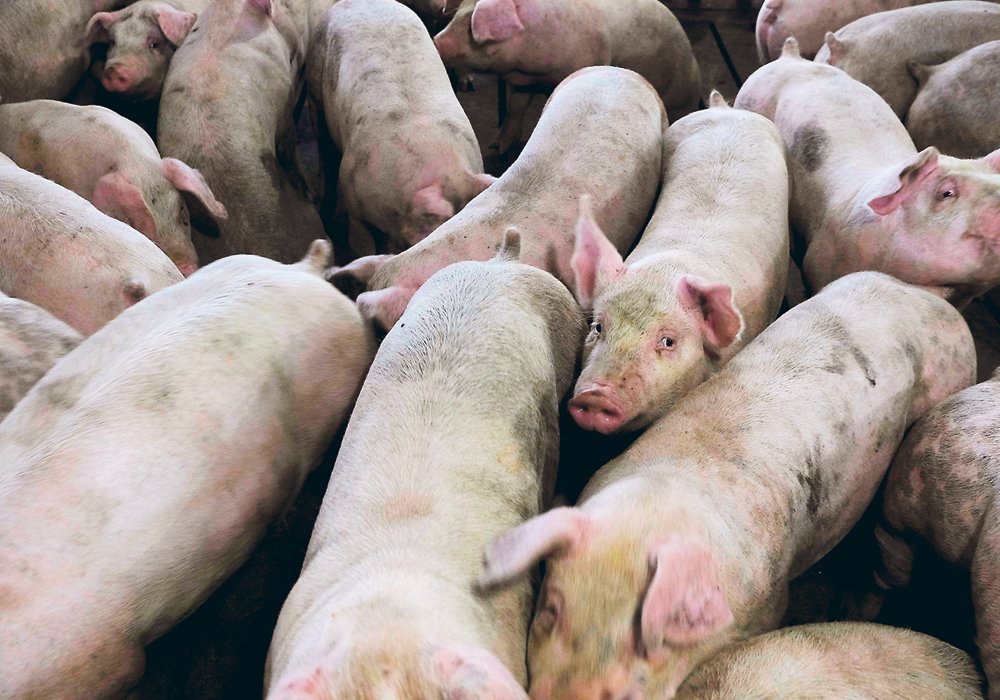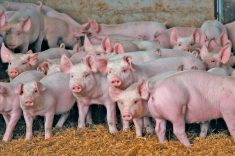Glacier FarmMedia – Canada is on pace to run a $150-million trade deficit in red meat with the European Union in 2019.
In the first 10 months of 2019, Canada exported more pork and beef to the EU than in 2018. But the Europeans are also selling more red meat to Canada.
Why it matters: The Comprehensive and Economic Trade Agreement (CETA) was supposed to open significant new markets for Canadian meat.
Using Agriculture Canada statistics from January to October: Canada imported $121 million in pork from the EU. Canada imported $31.5 million in beef from Europe. Canada exported $7 million in pork and $20 million in beef to the EU.Overall, Canada had a trade deficit with Europe of $125.5 million in pork and beef.
Read Also

Canada seventh-most influential country on agri-food
Report from Dalhousie University and MNP shows Canada ranks seventh among G20 countries on agri-food influence.
If the pace of sales continued into November and December, Canada may have a red meat trade deficit, with the EU of $150 million. That would be similar to 2018, when the deficit was $155 million.
The numbers run contrary to comments by some who saw the Comprehensive and Economic Trade Agreement (CETA) as a boost for Canada’s red meat industry.
“When completely implemented, CETA is expected to result in $1.5 billion in new agri-food exports, including $600 million in beef, $400 million in pork,” the Canadian Agri-Food Trade Alliance said after the deal entered provisional status in September 2017.
CAFTA still supports CETA, but it wants the federal government to defend the interests of Canadian exporters.
“The CETA has been in force for over two years yet real access to the EU market remains elusive for Canadian agri-food exporters as the European Union is slow to abide by its commitments,” CAFTA said in a release. “The federal government must not simply negotiate and ratify trade agreements; it must work with trading partners… to ensure what’s in the agreements is respected and enforced.”
CAFTA and other business groups are frustrated because the Europeans continue to impose non-tariff barriers to trade.
For pork, the barrier is trichinella. (read ore further down)
“When the Canadian industry looks at what’s required to ship to China, versus what is required to ship into EU, they will ship to China,” said Gary Stordy, director of government and corporate affairs for the Canadian Pork Council.
“It’s more expensive to ship to the EU… because of some of the testing requirements.”
The EU expects shipments of Canadian pork to be tested for trichinella, a parasite that can infect swine and can be transferred to humans in undercooked or uncooked meat.
“That’s an extra step (and cost) that some of the (pork) industry doesn’t want to pay for,” Stordy said.
Plus, EU pork imports are tiny compared to Japan or China.
From 2015 to 2018, the EU imported, on average, about $90 million worth of pork annually. The EU exports $11 billion worth of pork annually.
Still, there could be an opportunity for Canada to backfill the European market with pork. EU nations, like Denmark, are exporting massive quantities of pork because African swine fever has devastated the pig herd in China.
From January to October, European countries exported $4.8 billion worth of pork to China in 2019, based on EU data. That’s up from $2.6 billion in all of 2018.
Looking ahead, ASF could become a major factor in Europe. The disease is already in 10 European countries, including Poland, and there’s a chance it could enter Germany, a major pork producer.
That would hammer the European herd and cause pork shortages across the EU.
As for beef, it may not require a disaster to boost Canadian exports to the EU.
Exports in 2019 will likely triple the amount in 2017. But that’s based on very low numbers — $8 million in 2017 and possibly $25 million in 2019.
Nonetheless, Europe is a major importer of beef:
- The EU imports about $2.7 billion worth of beef annually.
- In 2018, Canada had a tiny fraction of the import market, about 0.6 per cent.
If Canada could expand that to 7.5 percent, comparable to Australia, it would represent about $230 million in annual sales.
There may be an opening but, for now, it seems like the United Kingdom is the best customer for Canadian beef. Of $20 million shipped from January to October, the U.K. bought $13.4 million.
France, a country with 67 million people, purchased $707,000 worth of Canadian beef from January to October, as well as $1,408 worth of Canadian veal.
EU testing protocols discourage trade
Trichinella are small parasites that can infect swine and wild animals, and trichinosis can be transferred to humans by consuming undercooked infected meat.
Canadians still get the disease when they eat bear, wild boar and meat from other wild animals, but trichinosis from hogs is extremely rare in Canada.
The last known case was in 2013 on a Mennonite farm in Ontario. The pig was raised in an old-fashioned barn on a non-commercial farm, and the family prepared the meat in a homemade smokehouse. Smoking doesn’t heat the pork to a sufficiently high temperature to kill the trichinella larvae. A child ate the pork and became sick.
Before that, the last case of trichinosis caused by pork was in 1980.
The Canadian Food Inspection Agency continues to monitor Canada’s swine herd for trichinella using two ongoing surveillance programs. In one, about 18,000 slaughtered hogs are tested annually, and in the other, 16,000 sows are tested for trichinella every three to five years.
“This is done to ensure that there has been no introduction of disease to the domestic swine population and to demonstrate to importing countries that Canada’s commercial swine herd is trichinella-free,” the CFIA says.
Those protocols are good enough for Japan, China, the United States and other countries that buy Canadian pork, but Europe wants Canada to go further.
Every shipment of fresh pork from Canada destined for Europe must be tested for trichinella.
“(Or) be submitted to cold treatment by using a treatment approved by the CFIA,” the CFIA says on its website.
That increases the cost and discourages exporters from selling to Europe.
This article was originally published at the Western Producer.















